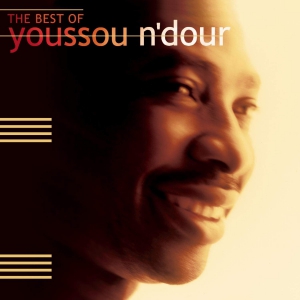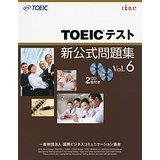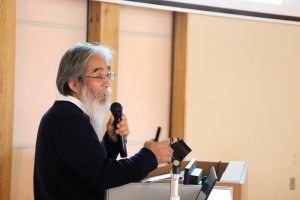3つ授業があったんで、当日に書かないと借金のようにたまっていくので、その日に書いてるけど、きのうはいろいろあって書くのが今日になりました。
10月10日2回目の授業でした。
トーイックのTest 1のPart 3(リスニング)の41~46(2問)、西アフリカの歌手二人の紹介、ビルのA Short History of Black Americansの朗読、西田くんのSlave Tradeの発表。
41~46は河野さんと羽田野さんにやってもらいました。出来れば自分の意志でやってくれると嬉しいね。わりと丁寧に解説し、何回か聞きました。1.6倍くらいでも聞いたんで、普通のスピードやとゆっくりに聞こえたやろ。前期もやったけど、後期初めての人は試してみてや。
歌手はセネガルのユッスー・ンドゥールとサリフ・ケイタ。どっちもなかなかインパクトあったやろ。それに打楽器が強烈やね。アフリカ系アメリカ人の音楽のルーツでもあるんで、最初に観てもらいました。
ビルの朗読、いい声してるやろ。朗読を聴いて理解するのもええと思うよ。要望があれば音声ファイルを参考ファイルに置くし、連絡してもらえればCDにコピーして持って行くで。
西田くんのSlave Tradeの発表、きちんと調べて来てよかったと思うよ。バズゥル・デヴィドスンが指摘してるように、今の時代に一番影響の強かった出来事奴隷貿易についてのドイツ人カール・マルクスが言ったSlavery was an essential part of the international capitalist market. By this trade the first large-scale collection of wealth was accumulated, speeding up development towards capitalism.は押さえておく必要があるね。日本語訳は最後に貼っておきます。
<次回は>
* コメント(何人か)
* トーイック関連: Part 3の続き
* 「アフリカシリーズ」の紹介
* Rootsの映像の続き。
CHAPTER 3: A Short History of Black Americans," in Africa and Its Descendantsアフリカ黒人小史、『アフリカ、その末裔たち』収載
SLAVE TRADE 奴隷貿易
By the early 1500’s, black people were going to the New World. The first blacks went to America as explorers, not as slaves.
1500年代の初め頃までには、黒人は「新世界」に行くようになっていました。最初の黒人は、奴隷としてではなく探検家としてアメリカに行きました。
In 1619 twenty Africans were unloaded in Jamestown, Virginia. That was the year when the roots of slavery began in the United States. Slave ships filled with captured black men and women began to sail across the Atlantic Ocean to the American shores.
1619年に20人のアフリカ人がバージニアのジェイムズタウンに積み荷として陸揚げされました。それが合衆国の奴隷制度の元が始まった年でした。捕われの身となった黒人男女で一杯の奴隷船が大西洋を横断してアメリカの岸へと航海を始めました。
In the slave trade the merchants’ profits and the products from America were exchanged in Europe for guns and cloth which were brought to Africa and exchanged for slaves. These humans were sold in America where they produced the goods to be brought to Europe. This was the so-called 'triangle trade’ or 'triangular trade.’ The riches of capitalists grew while Africa suffered. This slave trade continued for three and a half centuries and brought millions of Africans to America.
奴隷貿易では、商人の利益とアメリカでの産物がヨーロッパで銃や布と交換され、それがアフリカに持って行かれて奴隷と交換されました。その人たちはアメリカで売り飛ばされ、そこで産物を作って、その産物がヨーロッパに運ばれました。これは「三角貿易」または「三角の貿易」と呼ばれました。資本家の富は増え、アフリカは苦しみました。この奴隷貿易は3世紀半の間続いて、数百万人ものアフリカ人がアメリカに運ばれました。
European, above all English and American capitalists had gained enormous profits from the trade in slaves and the work performed by the slaves. Slavery was an essential part of the international capitalist market. By this trade the first large-scale collection of wealth was accumulated, speeding up development towards capitalism. The 'triangular trade’ was one of the foundations of the Industrial Revolution in Europe.
ヨーロッパ人、とりわけイギリスやアメリカの資本家が奴隷貿易と奴隷がした労働から莫大な利益を得ました。奴隷制は国際資本家市場の要の部分でした。この貿易によって大規模な初期の資本蓄積がなされて、速度を上げながら資本主義に向けて進んで行きました。「三角貿易」は、ヨーロッパの産業革命の土台の一つになりました。
For Africa the consequences of the slave trade were ruinous, not only in terms of the boundless suffering of the millions who were taken as slaves, and their descendants, but also for those left behind. In the Middle Passage sometimes whole groups of Africans, taken on deck at night for air, would leap into the sea – committing mass suicide rather than go into slavery.
アフリカにとっては、奴隷貿易のもたらす結果は、奴隷として連れ出された何百人もの人々とその子孫が被った際限ない苦しみという意味だけではなく、後に残された人たちにとってという意味でも壊滅的でした。中間航路では、外気にあてるためにデッキに連れて出されたアフリカ人たちが集団で海へ飛び込むこともありました。奴隷にならずに集団自殺をしたのです。
来週、また。










